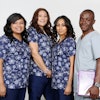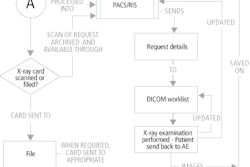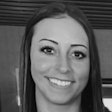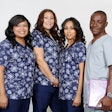A pair of recent presentations by researchers from Thomas Jefferson University Hospital in Philadelphia confirms what many radiologists have long suspected: a surge in noninvasive diagnostic imaging exams by cardiologists over the past few years.
A recent report prepared for the Blue Cross and Blue Shield Association concludes that the use of radiological modalities is driving up U.S. healthcare costs.
"The assumption is that it is radiologists who are somehow responsible for the cost increase," said Dr. Vijay Rao, who presented results of her team’s research at the 2003 RSNA in Chicago
The group conducted an analysis of the U.S. Medicare Part B databases from 1993 to 2001 and found that it's cardiologists who may be responsible for the acute increase in medical imaging reimbursement.
"Payments for noninvasive diagnostic imaging rose 71% from 1993 to 2001; however, payments to cardiologists in offices and private imaging centers grew markedly, with a 240% increase," said Rao. This resulted in an increase almost twice that of radiologists for Medicare reimbursement, she said.
Rao and her colleagues, along with Jonathan Sunshine, Ph.D., of the American College of Radiology, analyzed physician reimbursements for all noninvasive diagnostic imaging CPT-4 codes in the 70,000 and 90,000 series.
The researchers separated the physicians into nine categories: radiologists, cardiologists, hospital-based specialists other than radiologists, internal medicine subspecialists other than cardiologists, neurologists, obstetricians/gynecologists, emergency physicians and other miscellaneous specialists, primary-care physicians (including general internists), surgeons, chiropractors/podiatrists/optometrists, and non-physician practitioners.
Medicare reimbursement for the period rose from $3.5 billion to $6 billion, a 70.6% increase. While radiologists showed a 58.4% uptick for the eight-year period, cardiologist reimbursement for noninvasive diagnostic imaging increased by 126.5%.
The increases were not confined to radiologists and cardiologists. Primary-care physicians were responsible for a 41.6% increase, surgeons' reimbursement rose 58.6%, and the other four groups aggregated an increase of 80%. Although the usage increase is high, the total dollar amount was small, according to Rao.
The researchers also looked at where the procedures were performed as part of their analysis. Payments in hospital inpatient and outpatient settings showed generally similar payment numbers for radiologists, cardiologists, and other nonradiologists. Payments for imaging services within the hospital inpatient setting increased a slight 0.3% over the eight-year period. Hospital-based outpatient imaging increased by 34%, with nearly $1 billion in reimbursement paid in 2001.
Private-practice offices and imaging centers saw the lion’s share of reimbursement for noninvasive diagnostic imaging. Nearly $4 billion was reimbursed in this setting in 2001, a 120% increase, most of which was for cardiologists, said Rao. Radiologists in this setting took pleasure in a 105% boost, while cardiologists enjoyed a 240% increase in payments for the same period. The six other physician groups surveyed by the researchers saw an increase of 67% in the private setting for the period.
"The trends shown by our study call for closer scrutiny of practices in private imaging centers and offices, especially when you look at the potential for self-referred studies done by cardiologists," Rao said.
Researchers from Thomas Jefferson also scrutinized the Medicare Part B databases from 1996 to 2001 to determine noninvasive diagnostic imaging workload over that five-year period. They measured Medicare professional component relative value units (RVUs) per thousand Medicare beneficiaries in the 70,000 and 90,000 series CPT-4 codes, grouped into 26 categories for purposes of analysis, and were calculated according to provider specialty status.
"We categorized the physician providers as radiologists, cardiologists, other non-radiologists, and multi-specialty groups including things like independent diagnostic testing facilities, ambulatory surgery centers, skilled nursing facilities, public health agencies and so on," said Dr. David Levin, who presented the group’s workload analysis.
The researchers found that radiologists’ RVU rate increased from 1288.8 in 1996 to 1490.2 in 2001, an uptick of 15.6%. Among other non-radiologists, the RVU rate rose 10.9%, from 268.8 in 1996 to 298.2 in 2001. For cardiologists, the RVU rate jumped from 258.5 in 1996 to 413.0 in 2001, an increase of 59.8%.
According to Levin, the major noninvasive diagnostic imaging categories that cardiologists participated in 2001 were echocardiography, cardiovascular nuclear medicine, and vascular ultrasound.
"The growth rates in workload among cardiologists are outstripping those of radiologists in all three of these categories. As a result of their massive growth rate, by RVU, cardiologists are now doing about two-thirds of all cardiovascular nuclear medicine studies," Levin said.
The non-radiologists conducted skeletal radiography, echocardiography, general ultrasound, vascular ultrasound, chest radiography, cardiovascular nuclear medicine, and bone densitometry studies.
"Although cardiologists and other non-radiologist physicians have considerable opportunity to self-refer for noninvasive diagnostic imaging, it appears that cardiologists are much more aggressive than other physicians are in taking advantage of this situation to build up their workload," Levin said.
By Jonathan S. BatchelorAuntMinnie.com staff writer
January 9, 2004
Related Reading
Non-radiologists outpace radiologists in skyrocketing use of ultrasound, December 1, 2003
Radiologists and surgeons fractured over vertebroplasty vs. kyphoplasty, November 18, 2003
Musculoskeletal ultrasound on the rise, may yield cost savings, January 31, 2003
Imaging by non-radiologists drives up healthcare costs, November 25, 2002
Copyright © 2004 AuntMinnie.com



















